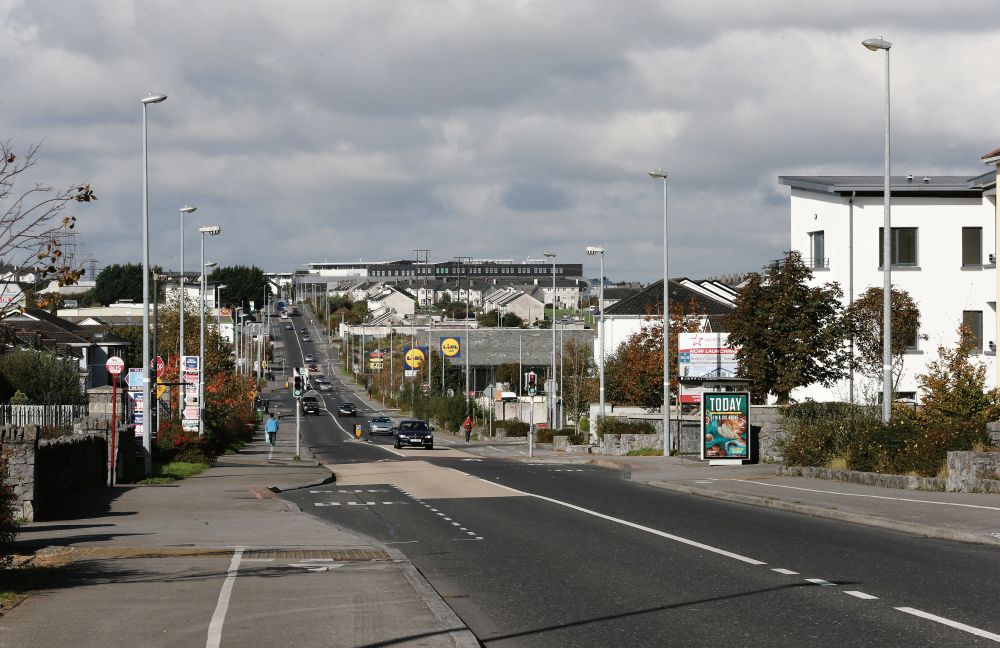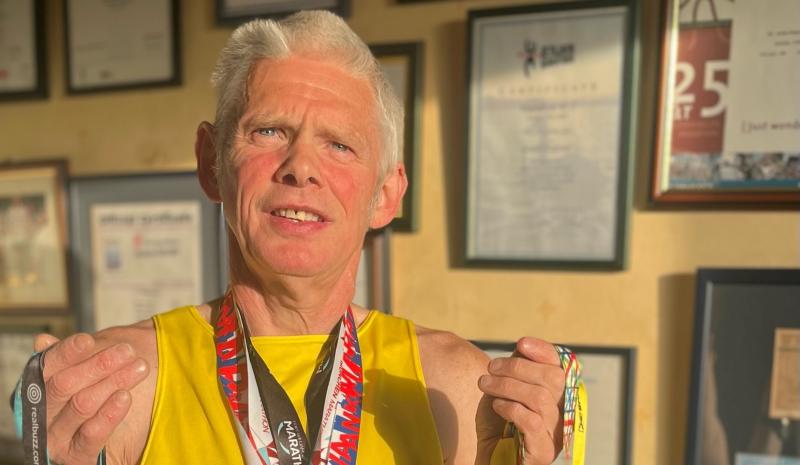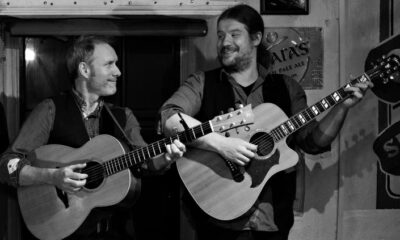News
Lack of integration one of biggest issues for Doughiska community

A new report, commissioned by NUI Galway’s Institute for Lifecourse and Society, has shed new light on on the Doughiska area.
The ‘3-Cities’ Project – launched by Katherine Zappone, Minister for Children and Youth Affairs – investigated experiences and transitions in people’s lives in six city neighbourhoods carefully selected from Dublin, Limerick and Galway – with the focus in Galway on Doughiska and the Claddagh.
It’s a first-in-its-kind report taking the shared perspectives of local children and youth, older people and people with disabilities to create a picture of society in the neighbourhood. 
Doughiska – taking in the greater Ardaun, Roscam and Doughiska (ARD) area met a number of the criteria set out, including being a new suburban development, having a strong representation of new migrant/ethnic minority communities, as well as having a low neighbourhood level of socio-economic status.
The report on Doughiska centred on a number of issues relevant to the east city suburb – drawing on the areas rapid change, diversity, integration, neighbourhood belonging and safety and security.
Much was made of the fact that 47 per cent of residents in Doughiska are foreign nationals – compared to just 17 per cent of the city as a whole.
Also evident from the report, and particularly from the older generation’s responses, was the speed at which the community has changed – from what was “originally a rural community on the fringe of Galway city is a newly built, developing and exceptionally diverse neighbourhood situated on the most eastern part of the city”.
Information was collated over a three-year period – and drew on the experiences of local residents by means of focus groups, interviews and collaborative forums.
The report details how this once rural area hastily transformed into the bustling city suburb that it is today – framed in the responses of the older groups involved as they reflect on the changes they have witnessed in the space of just a few short years.
The population of Doughiska is termed a “layered population” made up of the older residents who lived there prior to its development, foreign national residents who come from a variety of different backgrounds and Irish residents who have moved to the neighbourhood since its development.
An older male respondent summed up the changes they had witnessed in recent times.
“That time back, there was just a shop there at the corner. You had no Dunnes Stores, you had no Lidl, no Aldi, no Sean Bhaile, there was all green fields around it. The farmer sold it and then it was sold on again to Galway City Council where Sean Bhaile [housing estate] is now,” he recalled.
Diversity was one of the strongest themes to emerge from the research and much was made of the efforts in the community to unify the different cultures and ethnic backgrounds – as well as highlighting “the complex realities of bringing together in a single neighbourhood so many different cultural groups, with different expectations and preferences”.
With diversity comes integration and evidence available to the researchers pointed to low levels of interaction between different cultural and ethnic groups outside specific structures such as schools and community centres.
“I still cannot see integration of the communities. I still cannot see that. I still can see Africans moving with Africans, Polish moving with Polish, just like that. I still cannot see integration,” commented one older male.
Another issue flagged in this area was English proficiency and its compounding of problems of integration.
“There are challenges, you have to be very open and you have to be very accepting of people . . . some people wouldn’t be talking to African people because they don’t understand them, but that would be older people maybe. But there are challenges definitely to keeping the whole community integrated,” said one older female respondent.
There was praise reserved for the attendance of non-Catholic residents at Doughiska Catholic Church as a means of integrating with other neighbourhood members – as well as for the ARD Family Resource centre and the mechanism it provides for community interaction.
Neighbourhood belonging, a theme said to be “fundamentally connected to themes of change and integration,” was another important aspect of the investigation.
Some of the respondents believed that the rapid transition of the area altered their sense of belonging – with a tendency amongst the older generation to link belonging to an individual’s place of origin.
Some of the younger people involved commented that finding a sense of belonging was difficult for them.
“I am pretty confused like, I want to be fully Irish but then I know I’m not and this is who I am and I can’t change it,” said a young Polish female.
“There was a time you knew your neighbour, not anymore”
A lack of familiarity and not “knowing your neighbour” has added to a general sense of insecurity and safety concerns in the Doughiska area – according to NUI Galway’s 3-Cities Project.
While it was acknowledged by almost all in the community that it is a safe neighbourhood, there were a number of “perceived factors” that were contributing to feelings of insecurity.
One older male spoke about how feelings of distrust stem from unfamiliarity with those living around you and changes in the way that people interact.
“It’s a very mixed community now. There was a time you knew your neighbour; you don’t know your neighbour anymore. You don’t communicate, you don’t bother each other. It’s got more privatised if you like. Don’t mix, nothing, you just do your own thing whatever you do whether it’s right or wrong.” he said.
“You don’t have that anymore, who is your neighbour? It could be Polish, it could be Lithuanian, it could be Nigerian, it could be anything, but that’s all you know, end of story. Where is the trust? If you can’t trust someone you have nothing,” he continued.
Merlin Woods were identified as an important local resource but many felt insecure about making use of the woods due to associations with antisocial behaviour. 
Reports of teenage gangs of “10 or 12 guys walking around” as well as a lot of drinking have added to the general sense of fear about using the woods.
The behaviour of a few has contributed to fear amongst older people, younger people and people with disabilities. Children explained that stories of horses being burned alive and people going missing have discouraged them from using the facility.
It was reported that the case of the Merlin Woods highlighted the example of how the built environment could contribute to a sense of vulnerability and fear as well as decreased participation in the neighbourhood amongst disabled people.
One person with a disability claimed that they would fear going into the woods on their own.
“I wouldn’t go on my own now. It’s getting bad, I would never go at night time because people are getting attacked, you know,” he said. “It’s okay in the evening but at night time I never go anywhere. See down there they were supposed to fix the light and the light is not fixed down there.”
The report suggested that street lighting, so-called ‘ghost estates’ and the Merlin Woods were all adding to a sense of insecurity in the area.
The Merlin Woods were regarded as a great asset to the community, but it was asserted that a stronger Garda presence would be needed for people to feel safer walking through the woods alone.
[avatar user=”scorrigan” size=”100″ align=”left” /]You can contact Stephen Corrigan, the Galway City Tribune’s Communities Reporter at stephen.corrigan@ctribune.ie
Connacht Tribune
West has lower cancer survival rates than rest

Significant state investment is required to address ‘shocking’ inequalities that leave cancer patients in the West at greater risk of succumbing to the disease.
A meeting of Regional Health Forum West heard that survival rates for breast, lung and colorectal cancers than the national average, and with the most deprived quintile of the population, the West’s residents faced poorer outcomes from a cancer diagnosis.
For breast cancer patients, the five-year survival rate was 80% in the West versus 85% nationally; for lung cancer patients it was 16.7% in the west against a 19.5% national survival rate; and in the West’s colorectal cancer patients, there was a 62.6% survival rate where the national average was 63.1%.
These startling statistics were provided in answer to a question from Ballinasloe-based Cllr Evelyn Parsons (Ind) who said it was yet another reminder that cancer treatment infrastructure in the West was in dire need of improvement.
“The situation is pretty stark. In the Western Regional Health Forum area, we have the highest incidence of deprivation and the highest health inequalities because of that – we have the highest incidences of cancer nationally because of that,” said Cllr Parsons, who is also a general practitioner.
In details provided by CEO of Saolta Health Care Group, which operates Galway’s hospitals, it was stated that a number of factors were impacting on patient outcomes.
Get the full story in this week’s Connacht Tribune, on sale in shops now, or you can download the digital edition from www.connachttribune.ie. You can also download our Connacht Tribune App from Apple’s App Store or get the Android Version from Google Play.
Connacht Tribune
Marathon Man plans to call a halt – but not before he hits 160 races

On the eve of completing his 150th marathon, an odyssey that has taken him across 53 countries, Loughrea’s Marathon Man has announced that he is planning to hang up his running shoes.
But not before Jarlath Fitzgerald completes another ten races, making it 160 marathons on the occasion of his 60th birthday.
“I want to draw the line in 2026. I turn 57 in October and when I reach 60 it’s the finishing line. The longer races are taking it out of me. I did 20 miles there two weeks ago and didn’t feel good. It’s getting harder,” he reveals.
“I’ve arthritis in both hips and there’s wear and tear in the knees.”
We speak as he is about to head out for a run before his shift in Supervalu Loughrea. Despite his physical complaints, he still clocks up 30 miles every second week and generally runs four days a week.
Jarlath receives injections to his left hip to keep the pain at bay while running on the road.
To give his joints a break, during the winter he runs cross country and often does a five-mile trek around Kylebrack Wood.
He is planning on running his 150th marathon in Cork on June 4, where a group of 20 made up of work colleagues, friends and running mates from Loughrea Athletics Club will join him.
Some are doing the 10k, others are doing the half marathon, but all will be there on the finishing line to cheer him on in the phenomenal achievement.
Get the full story in this week’s Connacht Tribune, on sale in shops now, or you can download the digital edition from www.connachttribune.ie. You can also download our Connacht Tribune App from Apple’s App Store or get the Android Version from Google Play.
CITY TRIBUNE
Galway ‘masterplan’ needed to tackle housing and transport crises

From the Galway City Tribune – An impassioned plea for a ‘masterplan’ that would guide Galway City into the future has been made in the Dáil. Galway West TD Catherine Connolly stated this week that there needed to be an all-inclusive approach with “vision and leadership” in order to build a sustainable city.
Deputy Connolly spoke at length at the crisis surrounding traffic and housing in Galway city and said that not all of the blame could be laid at the door of the local authority.
She said that her preference would be the provision of light rail as the main form of public transport, but that this would have to be driven by the government.
“I sat on the local council for 17 years and despaired at all of the solutions going down one road, metaphorically and literally. In 2005 we put Park & Ride into the development plan, but that has not been rolled out. A 2016 transport strategy was outdated at the time and still has not been updated.
“Due to the housing crisis in the city, a task force was set up in 2019. Not a single report or analysis has been published on the cause of the crisis,” added Deputy Connolly.
She then referred to a report from the Land Development Agency (LDA) that identified lands suitable for the provision of housing. But she said that two-thirds of these had significant problems and a large portion was in Merlin Park University Hospital which, she said, would never have housing built on it.
In response, Minister Simon Harris spoke of the continuing job investment in the city and also in higher education, which is his portfolio.
But turning his attention to traffic congestion, he accepted that there were “real issues” when it came to transport, mobility and accessibility around Galway.
“We share the view that we need a Park & Ride facility and I understand there are also Bus Connects plans.
“I also suggest that the City Council reflect on her comments. I am proud to be in a Government that is providing unparalleled levels of investment to local authorities and unparalleled opportunities for local authorities to draw down,” he said.
Then Minister Harris referred to the controversial Galway City Outer Ring Road which he said was “struck down by An Bord Pleanála”, despite a lot of energy having been put into that project.
However, Deputy Connolly picked up on this and pointed out that An Bord Pleanála did not say ‘No’ to the ring road.
“The High Court said ‘No’ to the ring road because An Bord Pleanála acknowledged it failed utterly to consider climate change and our climate change obligations.
“That tells us something about An Bord Pleanála and the management that submitted such a plan.”
In the end, Minister Harris agreed that there needed to be a masterplan for Galway City.
“I suggest it is for the local authority to come up with a vision and then work with the Government to try to fund and implement that.”















